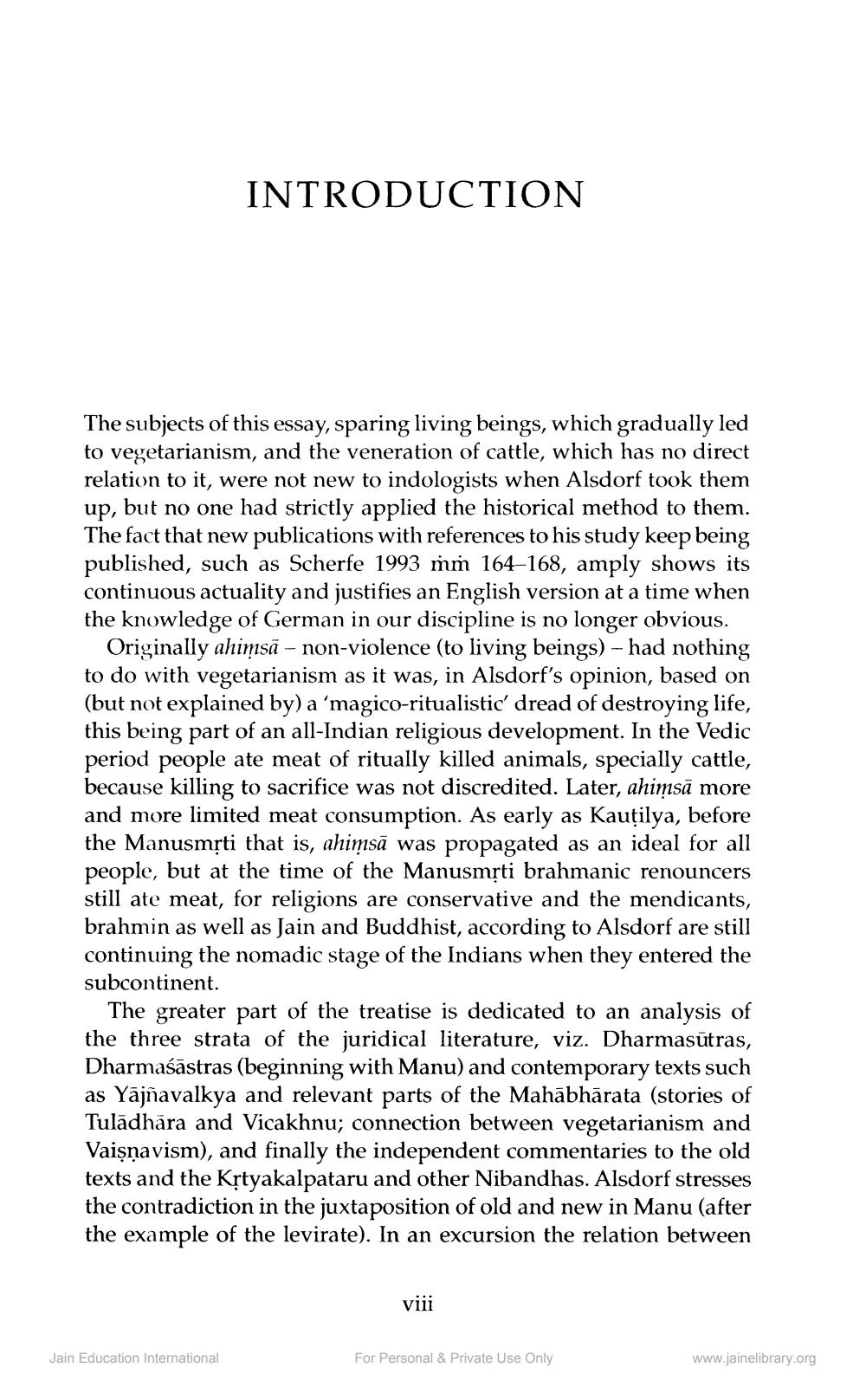Book Title: History of Vegitarianism and Cow Veneration in India Author(s): Willem B Bollee Publisher: Routledge and Kegan Paul Ltd View full book textPage 9
________________ INTRODUCTION The subjects of this essay, sparing living beings, which gradually led to vegetarianism, and the veneration of cattle, which has no direct relation to it, were not new to indologists when Alsdorf took them up, but no one had strictly applied the historical method to them. The fact that new publications with references to his study keep being published, such as Scherfe 1993 mm 164–168, amply shows its continuous actuality and justifies an English version at a time when the knowledge of German in our discipline is no longer obvious. Originally ahimsā - non-violence (to living beings) - had nothing to do with vegetarianism as it was, in Alsdorf's opinion, based on (but not explained by) a 'magico-ritualistic' dread of destroying life, this being part of an all-Indian religious development. In the Vedic period people ate meat of ritually killed animals, specially cattle, because killing to sacrifice was not discredited. Later, ahimsā more and more limited meat consumption. As early as Kautilya, before the Manusmộti that is, ahimsā was propagated as an ideal for all people, but at the time of the Manusmrti brahmanic renouncers still ate meat, for religions are conservative and the mendicants, brahmin as well as Jain and Buddhist, according to Alsdorf are still continuing the nomadic stage of the Indians when they entered the subcontinent. The greater part of the treatise is dedicated to an analysis of the three strata of the juridical literature, viz. Dharmasūtras, Dharmaśāstras (beginning with Manu) and contemporary texts such as Yājnavalkya and relevant parts of the Mahābhārata (stories of Tulādhāra and Vicakhnu; connection between vegetarianism and Vaişņavism), and finally the independent commentaries to the old texts and the Křtyakalpataru and other Nibandhas. Alsdorf stresses the contradiction in the juxtaposition of old and new in Manu (after the example of the levirate). In an excursion the relation between viii Jain Education International For Personal & Private Use Only www.jainelibrary.orgPage Navigation
1 ... 7 8 9 10 11 12 13 14 15 16 17 18 19 20 21 22 23 24 25 26 27 28 29 30 31 32 33 34 35 36 37 38 39 40 41 42 43 44 45 46 47 48 49 50 51 52 53 54 55 56 57 58 59 60 61 62 63 64 65 66 67 68 69 70 71 72 73 74 75 76 77 78 79 80 81 82 83 84 85 86 87 88 89 90 91 92 ... 186
